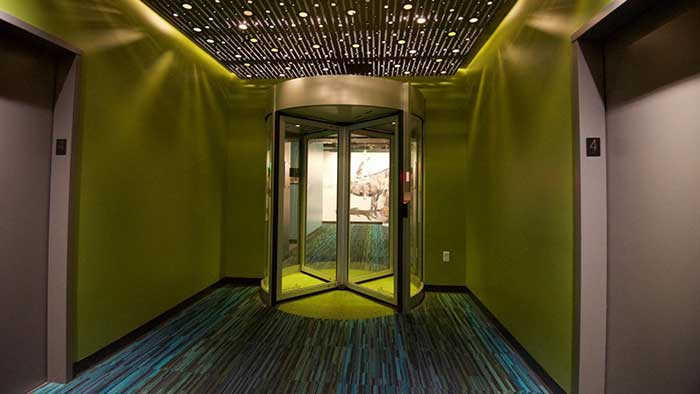One of Australasia’s fastest-growing areas of business – data centres, both major and decentralised – has been told that it needs to focus more on sustainability in the future after a decade of extraordinary growth and energy demands.
The international Honeywell organisation – with 97,000 employees worldwide – says data centres face mounting pressure from Governments, clients, and stockholders to become more sustainable and energy efficient: “In future, it may determine whether an operator succeeds or fails.”
“Governments including Ireland, the Netherlands, and Singapore are requiring owners and operators to submit a detailed sustainability plan for consideration before any approvals to build a new facility, or to expand an existing one,” says Michael Fisher, managing director, Boon Edam Australia.
“Even companies with their own dedicated internal data centres – particularly public companies needing to demonstrate green ethics to their shareholders – need to consider the implications of these energy-intensive facilities,” he added.
Boon Edam Australia is a branch of the Netherlands-based global company Royal Boon Edam, which operates in more than 27 countries, and specialises in energy-conserving revolving doors and complementary security systems, including those used internally in major data centre groups and facilities for security and physical separation. Boon Edam has a proven pedigree in this market, and supplies major data centre companies and internal data centres and data rooms globally, with Boon Edam Australia supplying to major data centres of all types locally.
Energy efficiency starts at the front door
“You get an idea how extensive the energy conservation issue is when you read current articles saying the extraordinary growth in data centres over the past decade is set to accelerate to meet rising demand as Australasia leaps into the ‘cloud’, with tens of thousands of micro and macro hubs springing up across the nation in the next few years. In each of the past few years Australia’s data centre floor space has grown by up to 14 per cent, which is forecast to continue for at least the next five years, with investment in both hyperscale and small-scale centres.” (Source: Australian Financial Review)

Interior use of Tourlock
“One-part of the problem, of course, is the huge amounts of energy needed to power data centres, which Honeywell has just estimated consume about 3 per cent of the world’s electricity and produce about 2 per cent of global cardon emissions (about the same as the airline industry). The other part is ensuring that the buildings in which the centres are located are themselves energy efficient, a process, which starts at the front door,” said Fisher.
One of the most immediate ways to help achieve energy use reductions in multi-storey buildings is to prevent expensively cooled and heated HVAC air from escaping from the building in the first place, both through open doors and what is described as the ‘Chimney Effect’ in taller buildings.
This occurs when the building’s HVAC system heats the warm air inside, which rises as the buoyancy increases. This creates a pressure differential, with a lower pressure at the base of the building. When a swing or sliding door is opened at ground level, it causes an inrush of air that forces heated air to the top of the building – a big issue in cooler months in all Australian and NZ cities, particularly those from Sydney and Auckland southwards.
The same effect happens in reverse in the warmer months generally and in warmer climates particularly, from Brisbane and Perth northwards, as cooler air sinks through the building in the opposite direction to tip expensively processed air onto the footpath.

Biometric scanning technology within revolving doors (left) complements security entrances, which can come with in-built facial recognition
Tossing money out the door
“It is effectively throwing money out the door, or off the roof,” says Fisher, noting that architectural revolving doors are naturally energy efficient, retaining expensive cooled or heated air, which is important when HVAC costs comprise a major part of a typical commercial, industrial, and social infrastructure building’s operating costs.
Fisher says many architects, builders, and facility managers with whom his company partners with have known about the energy efficiency and other advantages of revolving doors for years, including their inherent functioning as airlocks, which allow smooth pedestrian flow while saving money on heating, ventilation, and air-conditioning.
“But some clients in the past have often gone for cheaper options when energy was cheaper and sustainability targets were lower. Now the tide is turning, with the global and local surge of interest in environmental and sustainability objectives.”
“Architects and builders now are doing some real ROI comparisons that consider the comfort and sustainability objectives of the spaces they create for all commercial clients, including facilities such as data centres. It is no longer a question of ‘What is the cheapest door up front?’, but rather ‘How can we create a sustainable, secure and comfortable environment that meets our duties of care to occupants, visitors and the communities of which they are part?’”
Top image: Energy-conserving and security-enhancing Tourlock 180 exterior revolving doors used globally on data facilities

